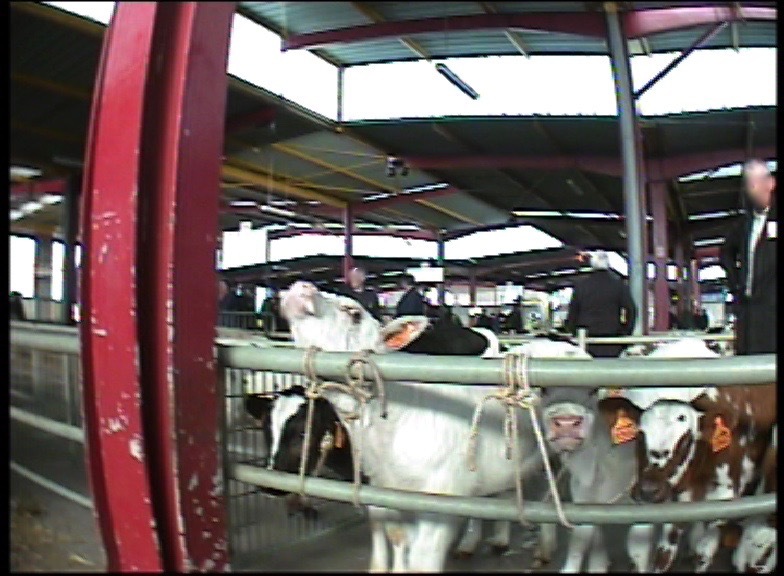

‘Livestock markets’: Hell’s death row
One Voice investigators have gathered terrible images of ongoing practices in ‘livestock’ markets. The brutality they document is the cause of much suffering…
Somewhere in France, in a livestock market…
Men grab the calf by the ears and tail and throw him out of the van as he cries in pain. In a shower of blows, they drag and load him into another vehicle. Further away, an angry man grabs the throat of a sheep, throwing him violently against a metal bridge. Elsewhere, a bull refusing to be loaded onto his long voyage to Spain is shot with a stun gun on his head, sides, anus and testicles. Some blows are inflicted with the end of the instrument, causing severe pain. Everywhere we can hear bleating, mooing and the infernal cacophony of these exhausted milk-cows, sheep, goats and calves waiting to be sold and sent off on their final voyage.
The violent images are so awful that One Voice researchers have investigated several French livestock markets.
Their findings also reveal that the worst moments for the animals come not only from the brutally conducted loading and unloading, but also from the transportation nightmare which can last days from France to Spanish or German slaughterhouses.
In one market, investigators noted that nine out of ten vehicles were not suitable for the transportation of animals. Some calves were waiting in an old van. Sheep were crammed into vehicles of all sizes, deprived of ventilation or bedding. Some were shut into trailers, and we even counted nine sheep in a private estate car! Livestock transportation in France is subject to strict regulation but this is completely disregarded…
Fact and figures
Every year, more than 2 million animals are sold in ‘livestock’ markets in France. These markets take place once a week in dozens of towns and villages. Generally, the market opens its doors at midnight to unload and distribute the animals. Hundreds of lorries, some with trailers or multi-storey, bring their head of cattle, sheep etc. from all surrounding farms. They are taken to waiting pens. Transactions start in the morning at dawn. For the animals, it’s the final phase before the slaughterhouse. For those that handle them, they are already the living dead, whose injuries will go unwitnessed.
Even if these markets are showing signs of vulnerability due to the milk crisis, France exports no less than one million horses, sheep and pigs every year to Italy. With approximately 60,000 beef cows exported annually to Lebanon, France has become the second European exporter in this region after Germany. As for Spain, it’s the second biggest buyer of living cattle originating from France, which represents around 400,000 animals per year leaving for fattening up and death, mainly calves from 15 days old and the young females. The French exporters are above all appreciated for their ‘weanlings’, the young calves or lambs nursed by their mothers in the fields. They are killed at around the age of 9 or 12 months for their pink flesh, after having been through hell in the daybreak markets. On the butcher’s stalls, there is no trace of their suffering. Yet it continues from market to market, year after year, with no one showing any concern.
What should we do?
To stop this cruelty and many other abuses inflicted every day on animals, One Voice has launched the crisis centre Zoe, a tool to create awareness, fighting against and preventing animal abuse. Crisis centre Zoe works in collaboration with the police and the authorities concerned.
But we as consumers can also do something. By giving up the consumption of meat, as well as milk products closely linked to the veal business, we can change the market forces and end this torture.